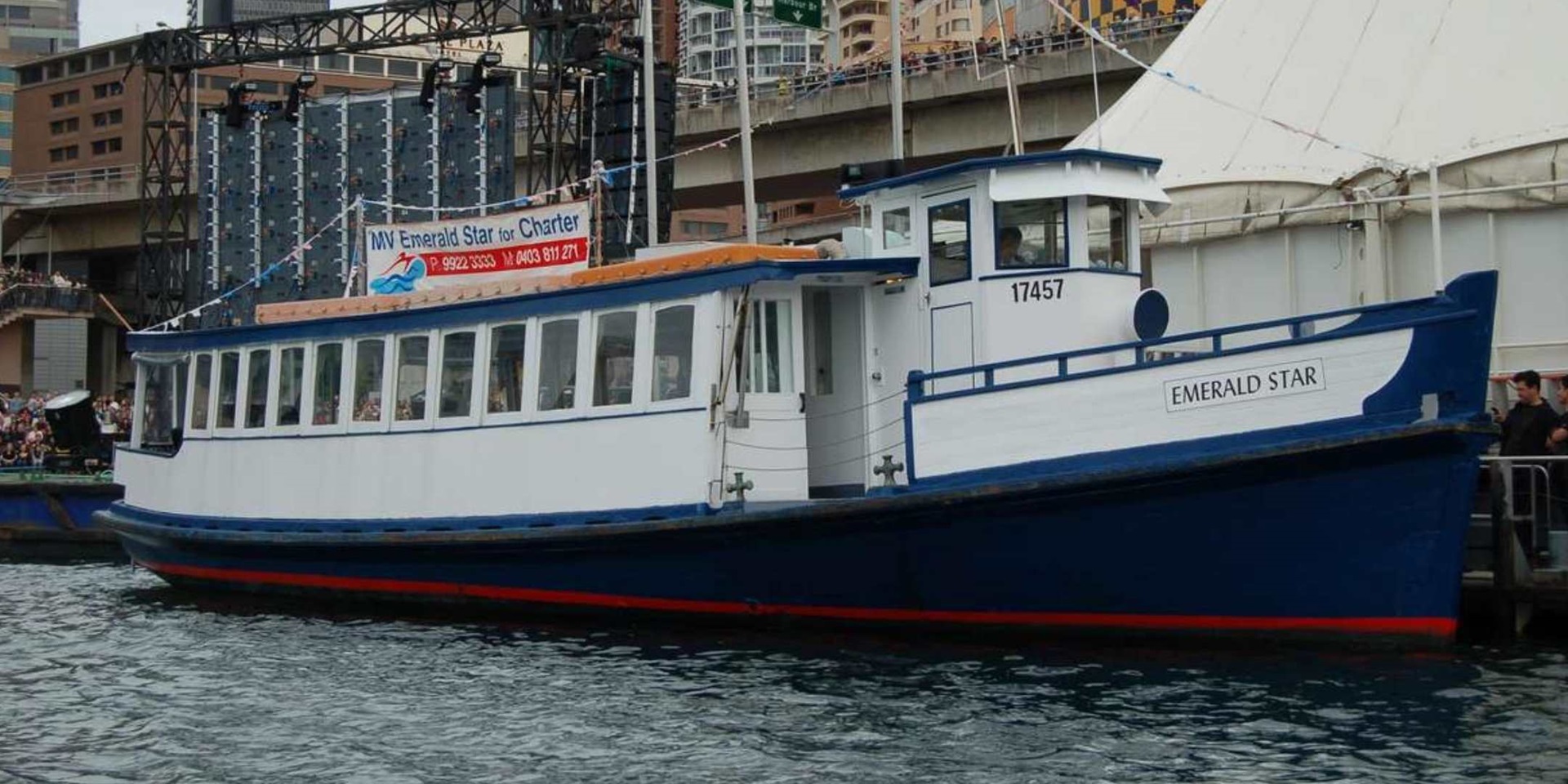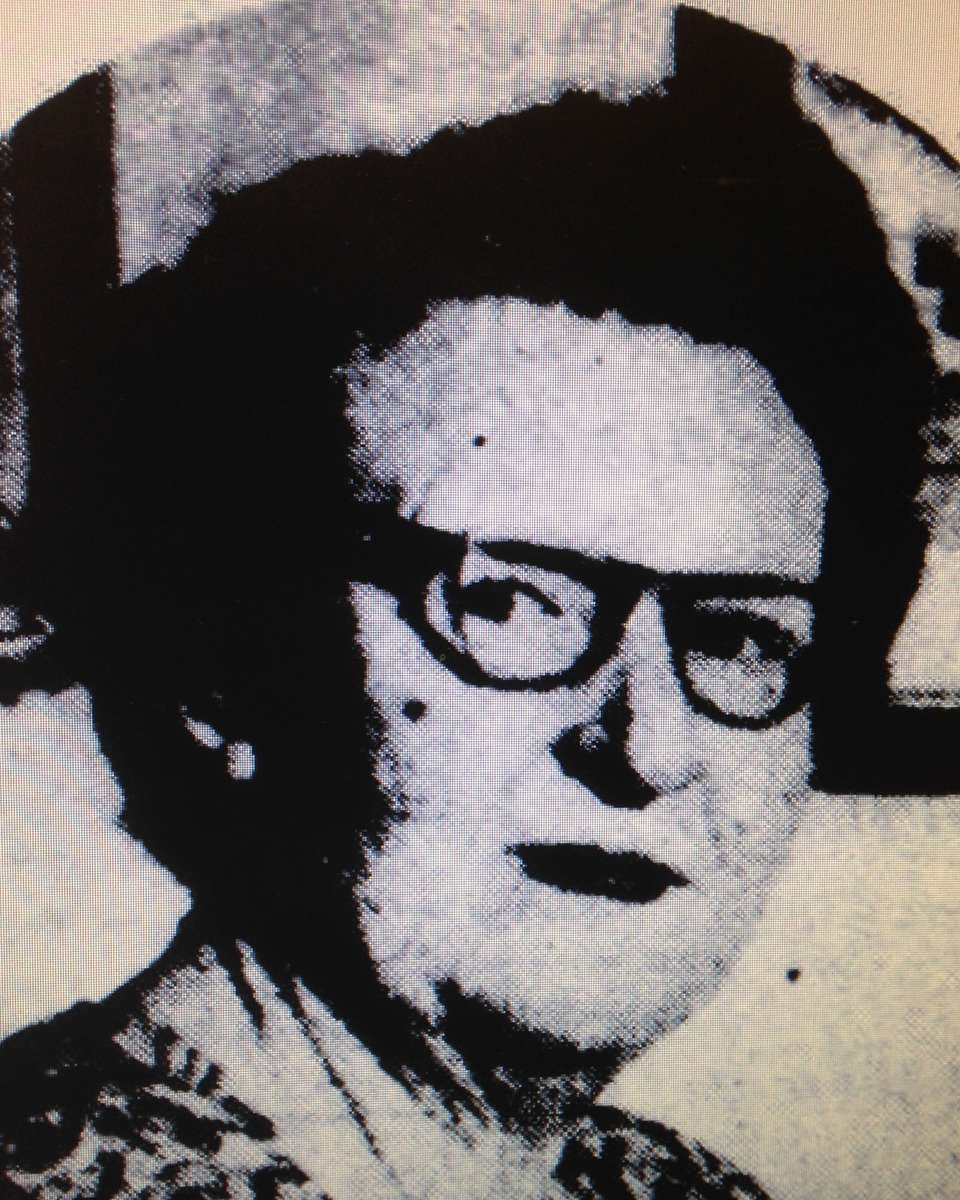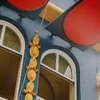

View of McMahons Point, from 1937, showing the boat building yards including Holmes yard on the far left. Image: ANMM Collection 00037893.
On 2 June 1949 a small advertisement appeared in the Sydney Morning Herald. It was for the sale of Hegarty’s Ferries, a family-owned service which at that time operated between Circular Quay, McMahons Point and Kirribilli. The whole enterprise was now up for sale, including the ‘diesel-engined boats, its wharves, offices, and equipment’. The owners, the well-known Hegarty family from Drummoyne, were heading south to Victoria.
A surprising purchaser stepped forward to take on the business – three women, headed up by Maud Barber. Maud, although no stranger to the Sydney harbour scene, bought the business along with her daughter and Miss Jean Porter. Maud was married to the boatbuilder and naval architect Arthur Barber, best known for his design of Rani, the first ever winner of the Sydney to Hobart Yacht Race, in 1945.
Admittedly, it first surprised me that in 1950 there were three women owning and running a Sydney ferry business. But look just a little deeper and it all makes perfect sense.
The Barbers had been designing and building boats for decades, but it seems that Arthur, gifted as he was in designing and building boats, had no such success in business. He was declared bankrupt in 1939, despite the preceding years being hugely lucrative for boatbuilding in Sydney.
In his defence, it seems Arthur was not entirely to blame for his financial woes. In 1933 Arthur was completing a boat for the wealthy Sydney businessman Alick Blackwood. According to testimony, Arthur was ‘visited’ by a fellow boatbuilder, Reginald Holmes, and his associates.

Reginald Holmes, local Sydney boat builder and no friend to Maud and Arthur Barber. Image: Sydney Herald.
Holmes, for undisclosed reasons and under the dubious protection of local police, took the almost completed launch from Arthur’s yard. Holmes was a highly successful boatbuilder himself, based at Lavender Bay, and was well known and respected. He was also well connected to the thriving criminal community that plagued Sydney’s foreshores at the time.
Despite police being present and Arthur’s own wharf labourers ready to step in, Arthur stood back that day at his yard and let Blackwood’s boat be taken without resistance. When questioned later as to why, Arthur replied that ‘They were of a class of men – well, I was afraid’.
In hindsight, Arthur had very good reason to be. Two years after the incident at Arthur’s yard, Holmes was embroiled in one of Sydney’s most famous murders, which would lead to Holmes’ own death.
The ‘Shark Arm Murder’ of 1935 captivated Sydney. The case had every element of the macabre and sensational that the public and newspapers could hope for.
When a captured tiger shark on display at Coogee baths vomited up a tattooed human arm, it led police on a murky path straight to Reginald Holmes’ door. His underworld dealings were exposed and he was later found dead in his car on Hickson Road in June 1935.
Although these events might have helped Arthur to reconcile with his decision to favour discretion over valour on the day Holmes took the boat, it didn’t help his financial situation and Arthur claimed bankruptcy in 1939.

Maud Barber “for where men could not do so she has made ferries pay”, April 1st 1951. Image: Sunday Herald.
In 1949 it seems salvation was at hand. Maud Barber was then studying dress designing but said as soon as she ‘saw an advertisement saying “Ferries for Sale” I knew I must have it. My husband is a naval architect and I did know a bit about boats’.
But it wasn’t just Arthur’s knowledge of boats that would make Hegarty’s Ferries a ‘little goldmine’ for the Barbers. From all accounts it was Maud’s commitment to her passengers, formidable administration skills and her obvious rapport with the skippers and deckhands. Despite the anomaly of having a female boss in the 1950s, the staff were very supportive, with one deckhand claiming, ‘The pay’s good and she has given us a change room. Suits me’.
And what of Jean Porter, the other female owner? Jean was an aspiring naval architect from England and was being tutored in her studies by Arthur. Her love of boats started as a child and she had sailed on yachts around the world. What a feeling it must have been for her to help design new boats for her own ferry company.
In the day-to-day running of the business, Jean was restricted to the office. Despite holding a Board of Trade Yacht Masters Certificate which qualified her to operate the ferries, union rules forbade her to do so. So she assisted in maintaining the vessels and working out rosters and timetables, but ‘in an emergency, she will leave her desk and don overalls to act as a deckhand’.
What a unique environment it must have been down on Wharf 6 at Circular Quay during the Barbers’ and Jean’s ownership. An account of the Hegarty’s Ferries offices at the time reads like an article from a home interiors magazine. There was an extensive display of award- winning plants, bright colours, contemporary furnishings and a comfortable ‘divan bed’. Good coffee and food were served and packed inside were ‘as many home comforts as possible and as we all love music we have our own opera programs and recitals on records usually at night’. The music was also played to passengers through loudspeakers so they could enjoy it while they waited at the wharf.
Together they all ran the business for 10 years before selling it in 1960. Even though they were successful, Maud wryly commented that after nine years at the Quay, they were still being talked about. People still thought ‘that ferries weren’t women and that men wouldn’t work for women’.

The Hegarty’s Ferry Emerald Star is still operational and remains a popular charter vessel. Image: Australian Register of Historic Vessels HV000325 (ANMM).
I like to think that if Holmes hadn’t stolen the boat from Arthur that day, sending him to financial dire straits, Maud may not have later insisted on buying Hegarty’s Ferries. By doing so she gave herself, Arthur and Jean a real opportunity to use their talents and provide the Quay with a unique time in Sydney ferry history.
For more curious tales and objects from our collections, head over to our Google Cultural Institute and Flickr pages.



